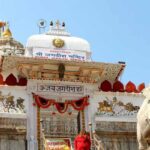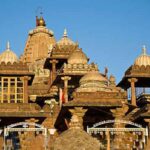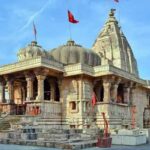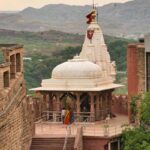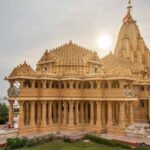Sathis Deori Temple in Chittorgarh, Rajasthan, stands as a testament to ancient architectural brilliance. Nestled within the Chittorgarh Fort, this temple is a striking example of intricate craftsmanship and historical significance. Dating back centuries, it showcases stunning carvings, delicate designs, and structural grandeur typical of the region’s temple architecture.
Dedicated to Lord Shiva, the temple’s sanctum sanctorum houses a revered lingam, drawing devotees seeking blessings and spiritual solace. Its location within the formidable Chittorgarh Fort adds an aura of mystique and reverence. The tranquil ambiance and spiritual resonance make it not just a religious site but also a place of cultural and historical importance.
Visitors are captivated by the serene surroundings and the temple’s architectural finesse, providing a glimpse into Rajasthan’s rich heritage. The Sathis Deori Temple remains a cherished gem amidst the historical tapestry of Chittorgarh Tourism, inviting travelers and devotees alike to witness its timeless beauty.
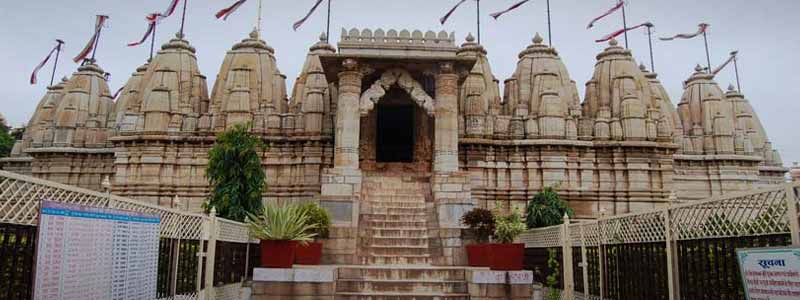
History of Sathis Deori Temple
The Sathis Deori Temple in Chittorgarh, Rajasthan, is an ancient Hindu temple dedicated to Lord Shiva. Its history dates back to the 8th century during the reign of the Mewar dynasty. The temple is renowned for its architectural beauty and spiritual significance.
Legend has it that the temple was built by the Pandavas during their exile, making it nearly 1,300 years old. The name “Sathis Deori” is believed to have originated from the word “Satis”, meaning Shiva, and “Deori”, referring to the temple Chittorgarh Tour Packages.
The temple’s architecture reflects a blend of various styles prevalent during different periods of its existence. The structure boasts intricate carvings, pillars, and exquisite designs that showcase the exceptional craftsmanship of ancient artisans.
One of the prominent features of the Sathis Deori Temple is its sanctum sanctorum, where devotees offer prayers to Lord Shiva. The temple holds religious significance for locals and attracts pilgrims and tourists alike, especially during festivals like Maha Shivaratri, when devotees throng to seek the blessings of Lord Shiva.
Over the centuries, the temple has undergone renovations and preservation efforts to maintain its historical and cultural significance. Its enduring legacy as a place of worship and its architectural grandeur continue to draw visitors, historians, and devotees intrigued by its rich heritage and spiritual aura.
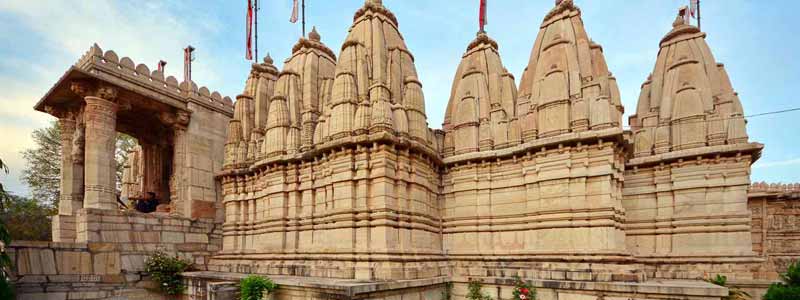
Places To Visit Near Sathis Deori Temple
Near the Sathis Deori Temple in Chittorgarh, there are several interesting places you can explore:
Chittorgarh Fort: This massive fort is a UNESCO World Heritage Site and is a significant historical attraction in Chittorgarh. It’s home to several palaces, temples, and towers that offer insights into the region’s rich history.
Vijay Stambh (Victory Tower): Located within the Chittorgarh Fort, this tower was built by Maharana Kumbha to commemorate his victory over the rulers of Malwa and Gujarat. It’s an impressive structure known for its intricate carvings.
Kirti Stambh (Tower of Fame): Another captivating tower within the fort, Kirti Stambh is a seven-story structure adorned with Jain sculptures and carvings, dedicated to Adinath, the first Jain Tirthankara.
Rana Kumbha Palace: This palace is within the Chittorgarh Fort and was the residence of Maharana Kumbha. It’s known for its architectural beauty and historical significance.
Fateh Prakash Palace: Built by Maharana Fateh Singh, this palace inside the fort has now been converted into a museum showcasing a collection of sculptures and archaeological artifacts.
Meera Temple: Dedicated to the famous mystic poet-saint, Meera Bai, this temple is located near the Kumbha Shyam Temple and is an important pilgrimage site for followers of the Bhakti movement.
Padmini Palace: Situated near the Chittorgarh Fort, this palace is associated with the legendary beauty of Rani Padmini and offers scenic views of the surrounding areas.
Kalika Mata Temple: A Hindu temple dedicated to Goddess Kali, located close to the Chittorgarh Fort. It’s known for its religious significance and architecture.
Bassi Wildlife Sanctuary: If you’re interested in nature and wildlife, you can visit this sanctuary, located around 5 kilometers from Chittorgarh. It’s home to various species of animals and birds.
These attractions offer a mix of historical, cultural, and natural experiences, giving visitors a deeper insight into the heritage and beauty of Chittorgarh.
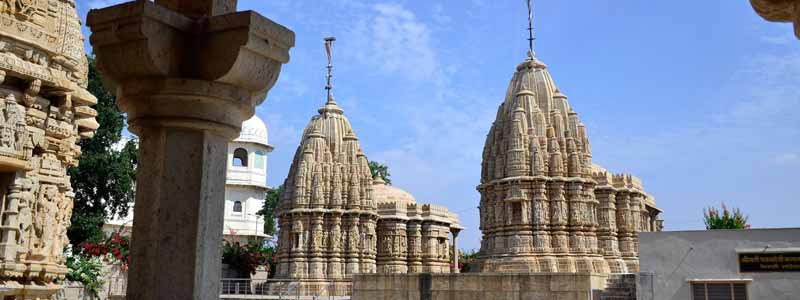
Best Time To Visit Sathis Deori Temple
The Sathis Deori Temple, located in Chittorgarh, Rajasthan, is a revered religious site attracting devotees and tourists alike. The best time to visit the Sathis Deori Temple and Chittorgarh Attractions, in general, is during the winter season, between October to March. During these months, the weather remains pleasant and relatively cooler, making it more comfortable for exploring the temple and the surrounding areas.
Avoiding the scorching heat of summers, which typically extends from April to June, is advisable as temperatures can soar, making outdoor activities and temple visits uncomfortable.
Additionally, it’s a good idea to check for any local festivals or religious events related to the temple as these occasions might offer a unique and culturally enriching experience but may also attract larger crowds.
How To Reach Sathis Deori Temple
Sathis Deori Temple, also known as Sat Bis Deori Temple, is a significant historical site located in Chittorgarh, Rajasthan, India. To reach the Sathis Deori Temple in Chittorgarh, you can follow these directions:
By Air: The nearest airport to Chittorgarh is Maharana Pratap Airport in Udaipur, which is approximately 100 kilometers away. From the airport, you can hire a taxi or take a bus to Chittorgarh.
By Train: Chittorgarh Junction is a major railway station in the region and is well-connected to various cities across India. You can take a train to Chittorgarh and then proceed to the temple by hiring a taxi or using local transportation.
By Road: Chittorgarh is well-connected by roads, and you can reach the city via buses, taxis, or private vehicles. There are regular bus services from nearby cities like Udaipur, Jaipur, and Ajmer to Chittorgarh.
Once you reach Chittorgarh, Sathis Deori Temple is situated within the Chittorgarh Fort complex. You might need to walk or hire a local auto-rickshaw or taxi to reach the temple within the fort premises.
It’s advisable to check local transportation options and any specific route information before you plan your visit to ensure a smooth journey to Sathis Deori Temple in Chittorgarh.


